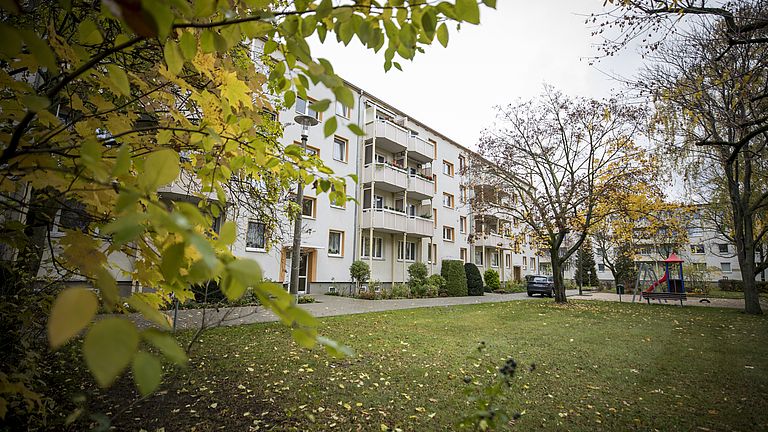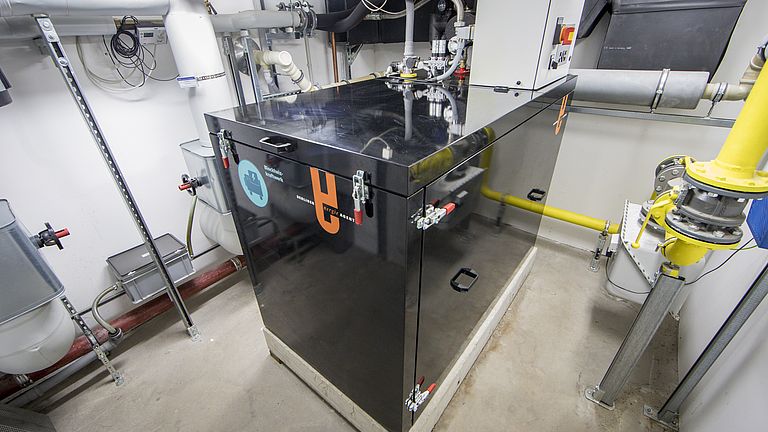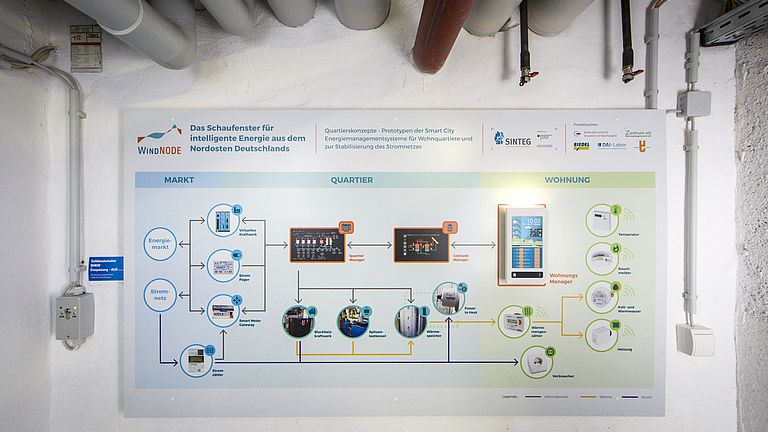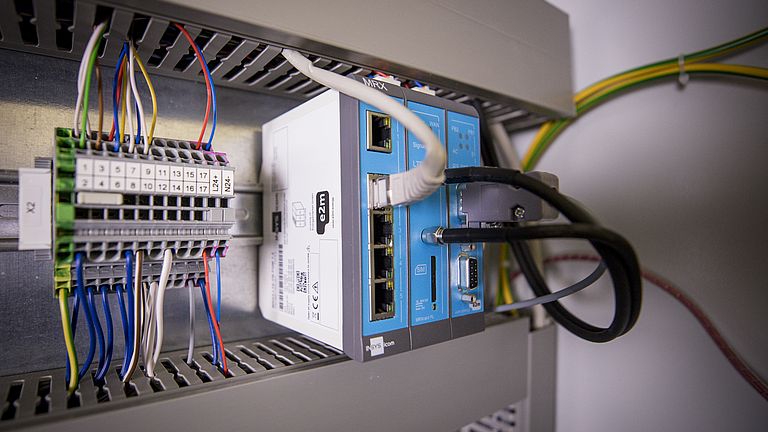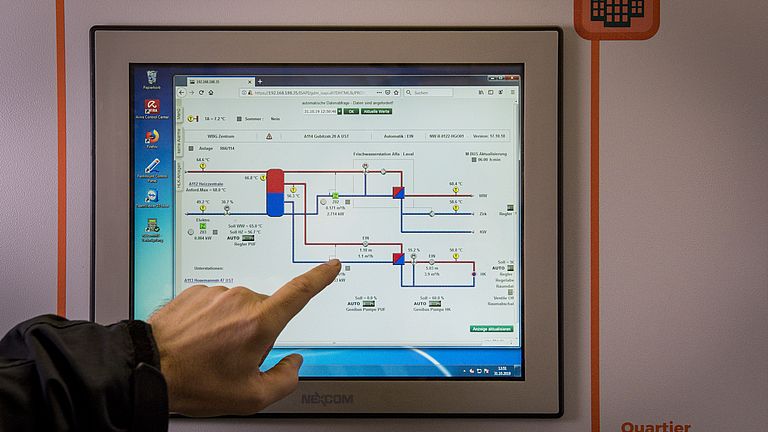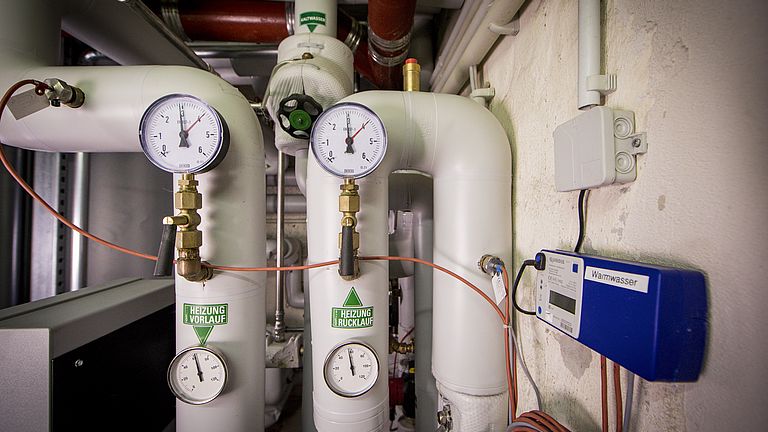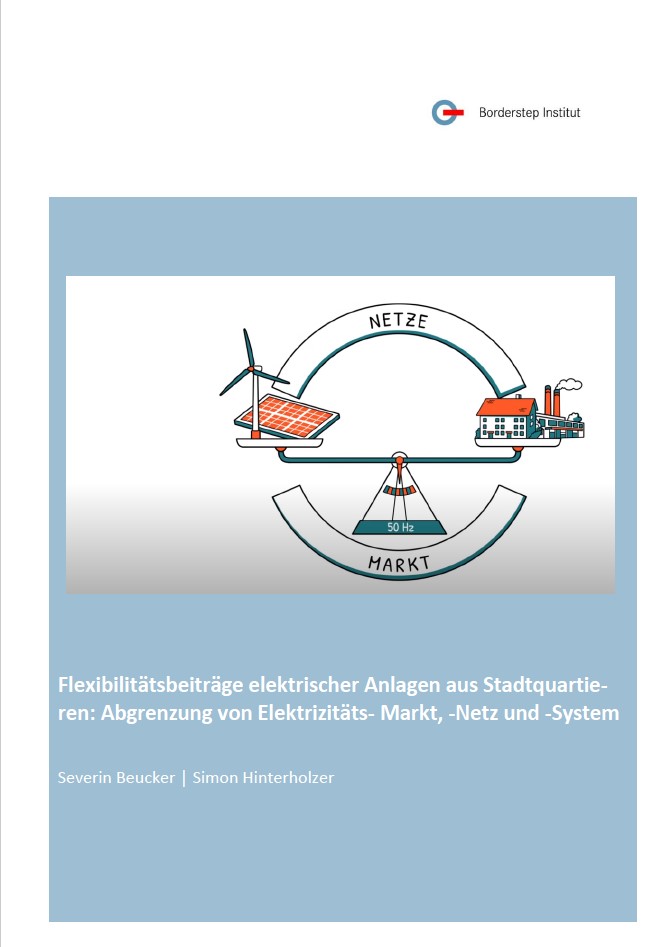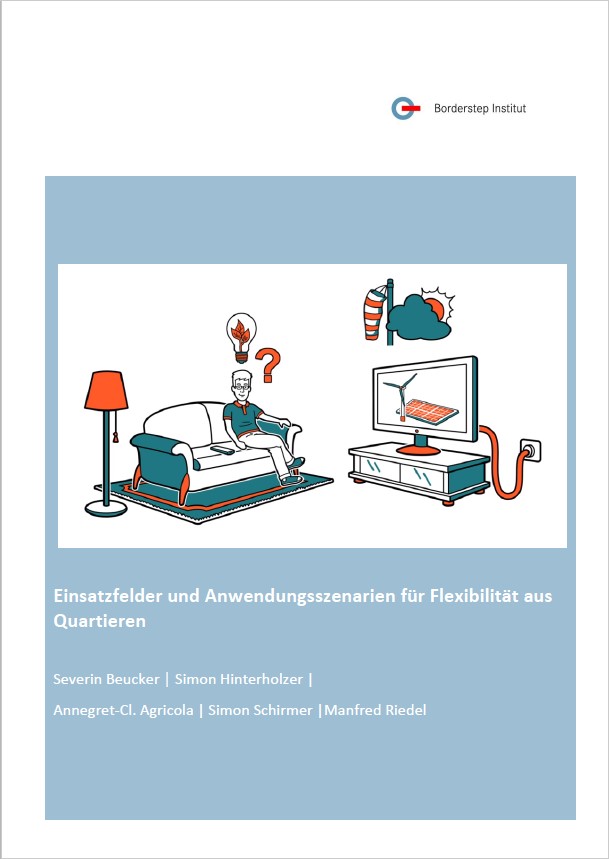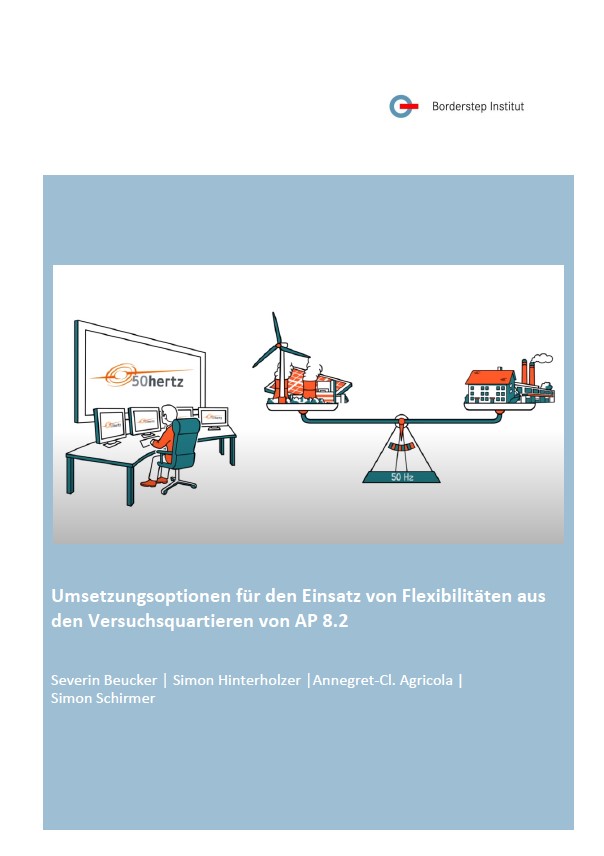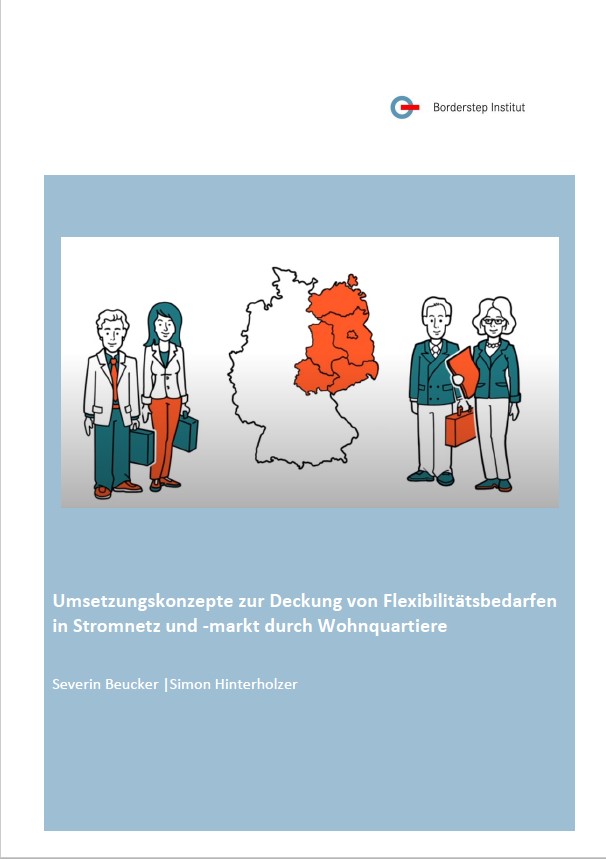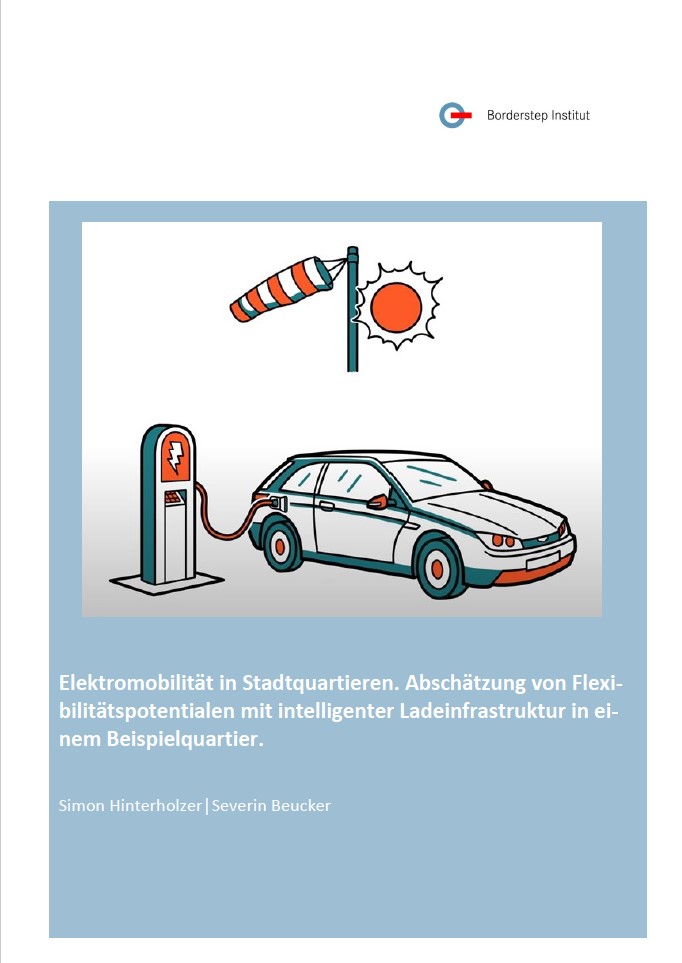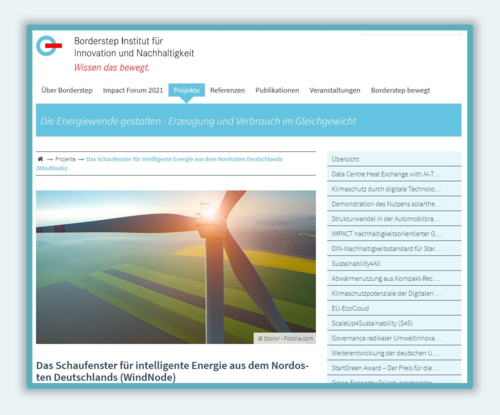City District Concepts
In Germany, based on information from the German Environment Agency (Umweltbundesamt – UBA) from 2017, households are responsible for around a quarter of final energy consumption. This means there is considerable potential here – for example through efficient use and as sites for distributed energy resources – to move the energy transition forward. As part of the WindNODE workstream Neighbourhood Concepts and the Smart City, various designswere tried out in the Berlin, Dresden and Zwickau model regions in order to understand this potential and work out how they could be carried over to other regions. The focus here was on load flexibility and regionalisation and on distributed self-generation.
The WindNODE subproject Model Region Berlin / Prenzlauer Berg Neighbourhood investigates how residential buildings and neighbourhoods can provide flexibility for the energy system. With its modular combined heat and power plant and smart building technology, the experimental quarter in Prenzlauer Berg provides the perfect environment for intelligent energy management. As part of WindNODE, this neighbourhood also got a power-to-heat unit. Tests are also under way there to check how the buildings and their units can respond flexibly to the renewable energies available on the market.
The Borderstep Institute for Innovation and Sustainability has now published a number of subproject reports summarising the approach to increasing the levels of flexibility in this neighbourhood along with the interim results. These have shown that smart management reduces the neighbourhood's heating energy by 25%. If energy management is controlled based on market prices and the availability of renewable energies, a further 15% of the natural gas used today can be replaced with renewable sources. This will allow the existing building stock to achieve levels that are below even those of low-energy houses.
The issue Smart building and Power-to-Heat in the conventional building of the WindNODE Spotlight reports provides some detailed and fascinating insights into this neighbourhood. Go to this issue of WindNODE Spotlight
The neighbourhood can also be visited, and guided tours of the boiler room are organised on certain dates. More information can be found on the web page for this visitor site.
You can download the Borderstep Institute's reports here:
Flexibilitätsbeiträge elektrischer Anlagen aus Stadtquartieren: Abgrenzung von Elektrizitäts- Markt, -Netz und –System (The flexibility provided by electrical units in city neighbourhoods: delimitation of the electricity market, grid and system)
The WindNODE workstream Neighbourhood Concepts and the Smart City – Model Region Berlin / Prenzlauer Berg Neighbourhood is testing out how residential areas in Berlin can contribute to the integration of renewable energies and to the stabilisation of the electricity distribution grid. The basic assumption is that the expansion of fluctuating renewable energies will continue to develop dynamically, the liberalisation of the electricity market will move forward and the framework conditions for the integration of flexible loads into the grid and the supply system will change in the medium term. Residential neighbourhoods in Berlin with the heating units installed there and their storage options can contribute to the integration of renewable energies and to the stabilisation of the electricity distribution grid. This report aims to offer a general understanding of the energy and technical environment of possible use cases and to feed into a discussion about the use of flexibility options provided by neighbourhoods.
Einsatzfelder und Anwendungsszenarien für Flexibilität aus Quartieren (Areas of use and application scenarios for flexibility provided by neighbourhoods)
The energy transition means that not only the expansion of renewable energies and the issues of grid expansion or conversion but also measures to tailor the demand for electricity are increasingly becoming the focus of research and the energy industry. Increasing flexibility in consumption is seen as a way of responding to the variable availability of renewable energies. Buildings can contribute to an environmentally friendly energy supply both through more efficient use of energy and as a site for distributed energy sources (e.g. heat pumps, PV systems). The report sets out how flexibility products in residential neighbourhoods can be supplied and marketed.
Umsetzungsoptionen für den Einsatz von Flexibilitäten aus den Versuchsquartieren von AP 8.2 (Implementation options for the use of flexibility provided by experimental quarters participating in workstream 8.2)
A central goal of the WindNODE workstream Neighbourhood Concepts and the Smart City is the in-situ testing of load shifting potentials and flexibility options provided by buildings and residential neighbourhoods. In this context, various technical implementations and marketing mechanisms for flexibility options will be tested out and knowledge will be gained about their development in neighbourhoods and how they work. In addition, the objectives of housing organisations, which prioritise minimising energy costs and lowering operating costs for residents, must be taken into consideration. The report sets out various options for mobilising flexibility in Berlin's experimental quarters.
Umsetzungskonzepte zur Deckung von Flexibilitätsbedarfen in Stromnetz und -markt durch Wohnquartiere (Implementation concepts arising from residential neighbourhoods in order to cover flexibility requirements on the power grid and the electricity market)
Based on the implementation options, concepts are set out that will unlock the flexibility in Berlin's experimental quarters. These take the form of a set of specifications and explain how the cases can be tested out in a Berlin experimental quarter, what partners are needed for this and what findings can probably be gleaned from a trial. Ultimately, at a later stage, they will also form the basis for the development of business models.
Elektromobilität in Stadtquartieren. Abschätzung von Flexibilitätspotentialen mit intelligenter Ladeinfrastruktur in einem Beispielquartier (Electromobility in city neighbourhoods. Assessment of flexibility potential with smart charging infrastructure in a sample neighbourhood)
Alongside testing flexibility options provided by buildings and residential neighbourhoods, an analysis of electromobility's impact on this potential is conducted. To this end, a model is developed that takes into account different scenarios for the expansion of e-mobility and the charging infrastructure. Ultimately, additional flexibility potential is derived from this.
www.borderstep.de/projekte/windnode/
Further information on Borderstep's projects within WindNODE and much more can be found on the Borderstep Institute website.
